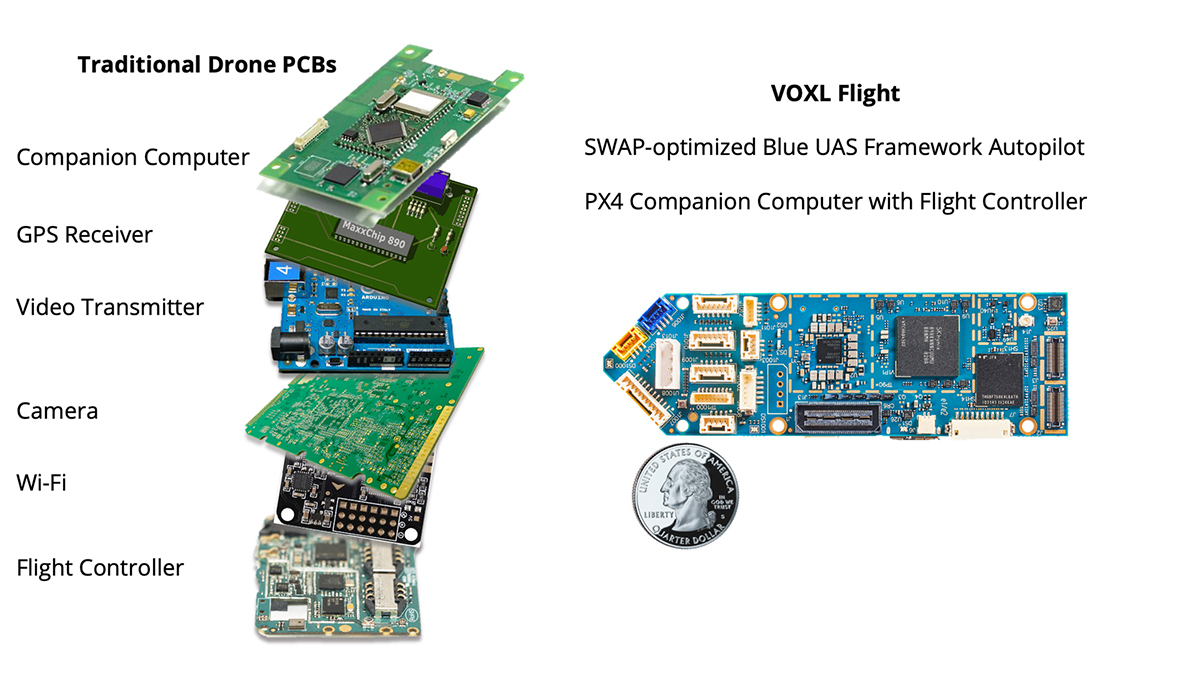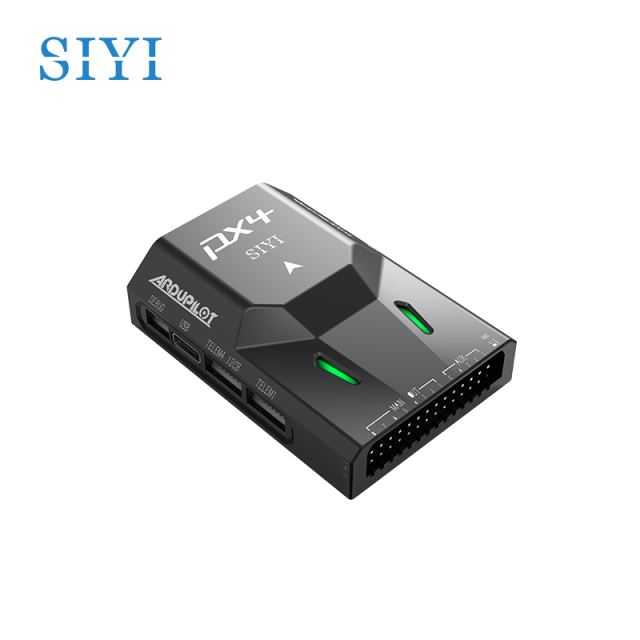The Future of UAVs: SparkNavi Drone Flight Controller and GNSS/INS Made in Taiwan
Discovering the Role of Drone Flight Controllers in Enhancing Flight Security and Navigating Efficiency
The development of drone modern technology has considerably boosted the significance of trip controllers, which offer as the mind of these aerial cars. By integrating real-time data from an array of sensing units, flight controllers boost trip security and navigating effectiveness, ensuring that drones can operate smoothly even in intricate environments.

Comprehending Trip Controllers
Flight controllers are essential elements in the performance of drones, functioning as the brains that support and manage flight procedures. These sophisticated tools procedure information from different sensors, consisting of accelerometers, gyroscopes, and GPS, to make sure that the drone maintains its desired flight path. The trip controller interprets this data and executes commands based upon pre-defined formulas, allowing the drone to react to environmental adjustments, such as wind or challenges.
The key feature of a trip controller is to keep stability during flight. It attains this by making real-time adjustments to the drone's motors and control surfaces, ensuring equilibrium and control. Additionally, contemporary trip controllers incorporate innovative features such as waypoint navigating, permitting automated trip courses and boosted functional performance.
Comprehending the architecture of trip controllers is important for both hobbyists and experts. They generally are composed of a microcontroller, firmware, and numerous user interfaces for sensing unit input and communication. As modern technology advances, flight controllers have ended up being more small and qualified, incorporating man-made intelligence to improve decision-making processes and adjust to complex trip scenarios. This advancement signifies an essential growth in the drone industry, leading the way for extra innovative applications and much safer procedures.
Secret Components of Flight Security
Achieving optimum flight security in drones relies upon a number of key components that operate in performance to make certain smooth and controlled procedures. Central to this security is the trip controller itself, which refines data from different sensing units to keep the wanted flight attitude. This includes accelerometers and gyroscopes that determine movement and orientation, enabling for real-time modifications to the drone's setting.
An additional important part is the electronic speed controllers (ESCs), which regulate the power delivered to the motors. By finely tuning motor rates in action to trip controller commands, ESCs aid keep equilibrium and counteract disturbances caused by wind or sudden movements.
Furthermore, the style of the drone's framework plays a pivotal duty in trip stability. A well-structured frame decreases resonances and boosts the total wind resistant profile, adding to smoother trip qualities. The integration of advanced formulas within the trip controller aids in anticipating changes, making sure a receptive and adaptable flight experience.
Together, these components create a natural system that improves a drone's stability, permitting for specific maneuvering and improved efficiency in different flight problems.
Navigation Performance Methods
Efficiency in navigating is necessary for optimizing drone operations, specifically in complex atmospheres. Effective navigation strategies improve the capacity of drones to pass through challenging terrains and stay clear of challenges, thus boosting operational performance and safety and security.
One famous technique is the execution of sophisticated general practitioners and inertial measurement devices (IMUs) that provide accurate area monitoring and orientation data. These modern technologies permit drones to calculate optimal flight courses in real-time, taking into consideration numerous factors such as wind problems and potential challenges.
An additional technique includes using algorithms for course planning and optimization. Algorithms such as A * and Dijkstra's algorithm can be released to determine one of the most reliable course while lessening power intake and flight time. Incorporating equipment learning models can enable drones to adaptively discover from their atmospheres, boosting navigating capacities with experience.

Effect On Autonomous Drones
The combination of innovative navigating methods has actually exceptionally changed the capacities of independent drones, allowing them to run with better freedom and accuracy. this article SparkNavi drone flight controller and GNSS/INS made in taiwan. These enhancements are mainly credited to innovative trip controllers that make use of real-time information handling and sensing unit blend, permitting drones to browse intricate settings effortlessly
The effect on autonomous drones extends beyond mere navigation; it encompasses boosted challenge avoidance, boosted stability during vibrant problems, and enhanced goal integrity. By leveraging formulas that integrate artificial intelligence and expert system, drones can adjust to altering circumstances, making educated choices that maximize their trip courses while minimizing threats.
Moreover, the implementation of durable trip controllers has facilitated the implementation of intricate tasks, such as aerial inspections, distribution services, and agricultural surveillance, with very little human intervention. This capacity not just improves operations however also minimizes human error, consequently improving total security.
Therefore, the functional scope of independent drones has broadened considerably, making them indispensable devices in various markets. Their capacity to execute effectively in varied scenarios emphasizes the vital role that advanced flight controllers play fit the future of unmanned airborne systems.
Future Fads in Flight Control
Regularly, developments in flight control modern technology are poised to redefine the landscape of drone operations in the coming years. Emerging trends show a considerable shift towards improved expert system (AI) combination, making it possible for flight controllers to process real-time information more effectively. This development will facilitate improved decision-making abilities, enabling drones to adjust to dynamic ecological problems autonomously.
Furthermore, the application of artificial intelligence formulas is anticipated to boost anticipating upkeep, consequently minimizing downtime and expanding the lifecycle of drone components. This aggressive method to maintenance will be important as drone applications expand across numerous markets, from agriculture to logistics.

.jpg)
Finally, advancements in safe communication procedures will deal with security and regulatory worries, making certain that drones can run flawlessly in overloaded airspaces (SparkNavi drone flight controller and GNSS/INS made in taiwan). Jointly, these trends point in the direction of a future where trip control systems are not just smarter and more also qualified but efficient of operating securely in a significantly integrated airspace
Final Thought
In verdict, drone flight controllers are important to improving trip security and navigating performance through the advanced processing of sensor data. By preserving optimum flight attitudes and utilizing innovative formulas for path optimization and obstacle avoidance, these controllers dramatically contribute to the autonomy and operational security of drones. As modern technology remains to evolve, even more improvements in trip control systems are prepared for, promising improved performance and expanded abilities in the realm of unmanned aerial automobiles.
By incorporating real-time information from a selection of sensing units, trip controllers boost trip security and navigating performance, ensuring that drones can operate efficiently also in intricate settings.Trip controllers are integral components in the functioning of drones, offering as the minds that maintain and handle trip operations. visite site Additionally, modern flight controllers incorporate sophisticated functions such as waypoint navigation, allowing for automated trip courses and improved operational efficiency.
Central to this stability is the trip controller itself, which refines information from different sensing units to maintain the wanted flight attitude.In verdict, find here drone trip controllers are integral to boosting trip stability and navigation efficiency through the innovative handling of sensor information.